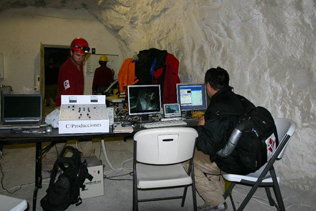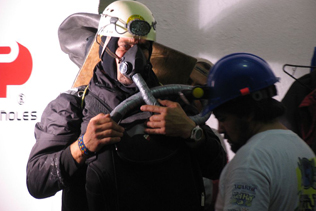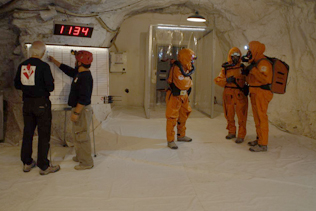|
Saúl Villasante and Alejandro Macías in the master control, |
Francesco Lo Mastro and Gerardo Escobedo |
The “Naica Project” started in 2006, to explore research and promote awareness of the Crystal Caves in the Naica Mine. The project developed gradually during twelve working trips to Naica between January 2006 and March 2008. In time the Naica Project pooled the expertise, experience, financial and professional infrastructure of various companies, groups, institutions and participants with the same goal: to augument knowledge and promote awareness of this natural heritage. |
|
|
An international team of scientists and researchers in the areas of speleology, mineralogy, topography, biology, exobiology, physics, medicine, philosophy of science, ecology, technology and professionals in computer systems, photography and film, among others, achieved this goal. |
| The caves will no doubt be lost to human eyes, either because the water will return when the mineral reserves are depleted and the pumping system of the mine stops, or because the loss of heat and humidity continue affecting the brightness and transparency of the crystals causing them to increasingly fracture and fall. The unique conditions of temporality and fragility of the site, made it more pressing for the Naica Project’s team to seize the opportunity to record for history and future generations, one of the most beautiful places on earth. |
|
he Naica Project`s team selected the following areas of interest and activities:
|
Three explorers preparing to enter the crystal cave |




